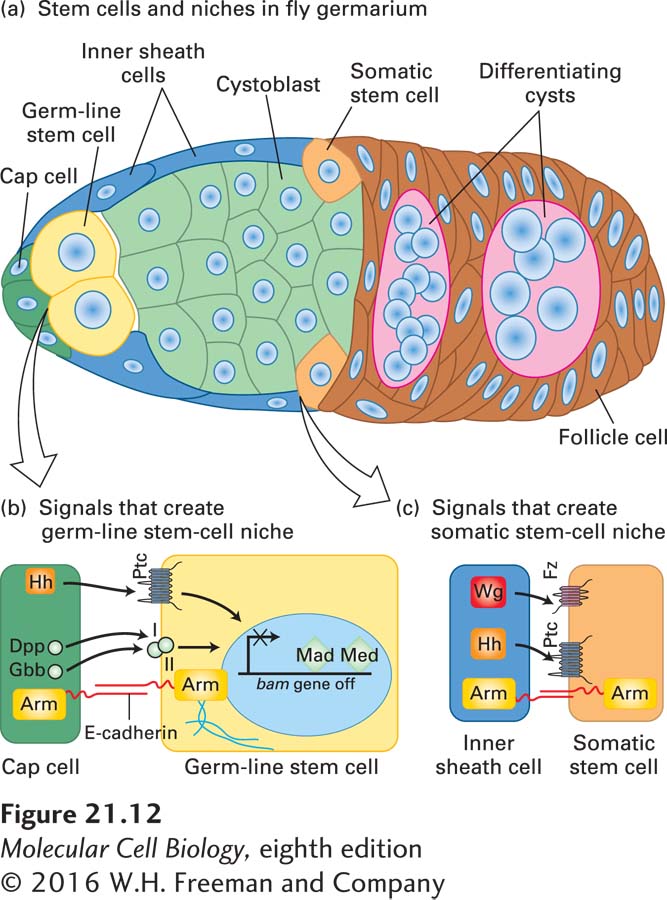
FIGURE 21- 12 A Drosophila germarium. (a) Cross section of the germarium, showing female germ- line stem cells (yellow) and some somatic stem cells (gold) in their niches and the progeny cells derived from them. The germ- line stem cells produce cystoblasts (green), which undergo four rounds of mitotic division to produce 16 interconnected cells, one of which becomes the oocyte; the somatic stem cells produce follicle cells (brown), which will make the eggshell. The cap cells (dark green) create and maintain the niche for germ- line stem cells, while the inner sheath cells (blue) produce the niche for somatic stem cells. (b) Signaling pathways that control the properties of germ- line stem cells. The signaling molecules— the TGF- β-family proteins Dpp and Gbb as well as Hedgehog (Hh)—are produced by the cap cells. Binding of these ligands to receptors on the surface of a germ- line stem cell— the TGF- β receptors I and II and Ptc, respectively— results in repression of the bam gene by two transcription factors, Mad and Med. Repression of bam allows germ- line stem cells to self- renew, whereas activation of bam promotes differentiation. The transmembrane cell- adhesion protein E- cadherin forms the homotypic adherens junctions between germ- line stem cells and cap cells. Arm (Armadillo), the fly β-catenin, connects the cytoplasmic tails of the E- cadherin to the actin cytoskeleton; both E- cadherin and Arm are important in maintaining the stem- cell niche. (c) Signaling pathways that control the properties of somatic stem cells. The Wnt signal Wingless (Wg) is produced by the inner sheath cells and is received by the Frizzled receptor (Fz) on a somatic stem cell. Hh is similarly produced and is received by the Ptc receptor. Both of these signals result in self- renewal of somatic stem cells. See L. Li and T. Xie, 2005, Annu. Rev. Cell Devel. Biol. 21:605 and T. Xie, 2013, WIREs Dev. Biol. 2:261.
[Leave] [Close]